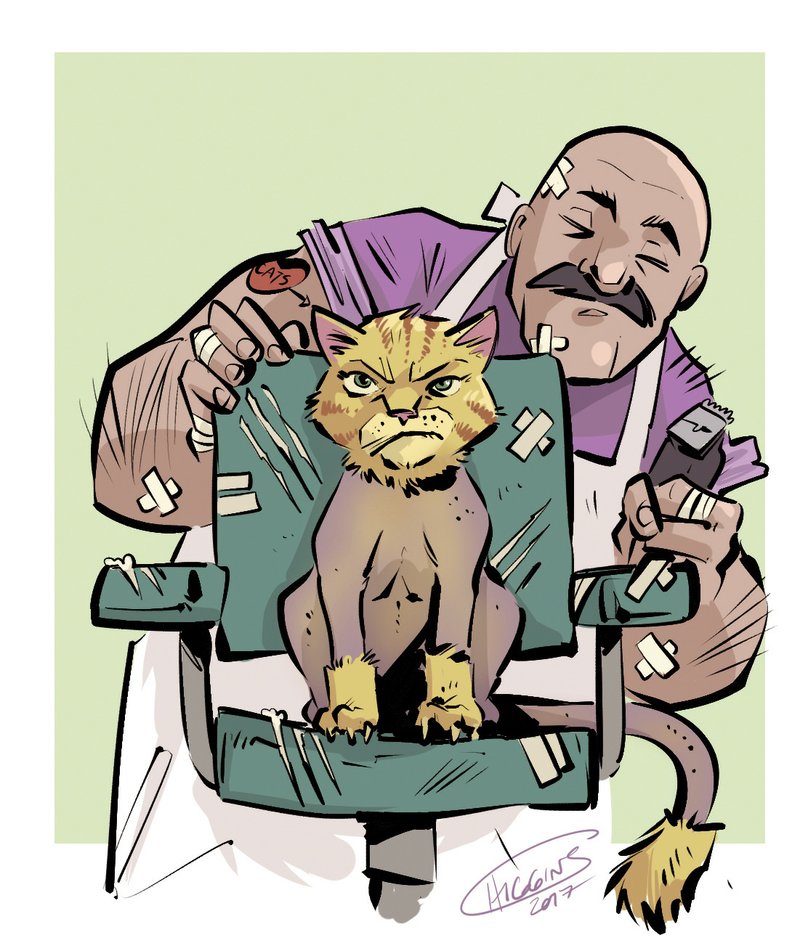What can I do to make my short-haired cat shed less? I got a short-haired cat thinking that she wouldn't shed as much as a long-haired one, but I was wrong. I have hardwood floors so I sweep every day. I know this sounds extreme, but can I shave my cat? (Really, I'm only half-kidding.) Anyway, she's strictly an indoor pet. So what about shaving?
Whether long-haired or short-haired, all cats shed. Some may shed less than others, but having an animal in the house means dealing with fur.
Shaving to control shedding isn't the most common method of dealing with the issue, but it's not unheard of. Veterinarian Justine Lee says in It's a Cat's World ... You Just Live in It: Everything You Ever Wanted to Know About Your Furry Feline that she shaves her two short-haired cats -- Seamus and Echo -- down to "peach-fuzz level" because she doesn't like dropping hair all over her house.
"Don't worry -- it's medically safe," Lee says of cat shaving. But she explains that the cats' safety without fur is predicated upon them being strictly indoor cats. If Seamus and Echo spent any time outdoors, shaving would be a bad idea.
A cat's fur functions as sunscreen to keep the cat from getting sunburned. The cat's coat also is its built-in temperature regulator, helping to keep the cat warm in the winter and cool in the summer.
An indoor cat, however, lives in a temperature-controlled environment and isn't in danger of sunburn so it's better able to tolerate life without being fully furred. When cats are shaved, it's typically in a style called the "lion cut," which leaves the fur on the head intact. With the lion cut, a cat usually retains a puff of fur at the end of its tail as well as enough fur on the feet and ankles to give the impression the cat is wearing booties.
When a long-haired cat receives the leonine treatment, the result can be appealing -- as long as it's done well. Lee notes that her short-haired cats also look attractive in the style. Keep in mind, though, the cut is a drastic change in appearance that'll take getting used to, for you and your cat.
With the lion cut or any type of shaving, the key to making it work is to have it done by a professional groomer. Lee shaves her cats, but she's a veterinarian with grooming skills. Because cats have delicate, somewhat loose skin that's easy to nick, shaving can be tricky for a novice. Also, most cats may not sit complacently for a cut so it's best to take them to someone who's used to handling nervous felines in a grooming situation.
When choosing a professional groomer, be sure to ask about the groomer's experience with cats, plus ask to see photographs of past work. A well-done lion cut can be cute, but pity the cat that gets a sub-par clip job.
Aside from the shaving option, your best bet for controlling shedding is to brush your cats daily. The more hair you can remove, the less hair will gather along baseboards or cling to your furniture and clothing. Lee advises that pet owners not be taken in by hype about liquids, ointments, food supplements and other products touted to reduce shedding.
If you choose to shave your cat, her coat could look different when it grows back, which usually takes about three months. The cat's post-shave coat should resemble her pre-shave fur but the undercoat may be thicker and the pattern less dramatic. Lee says she has noticed that her tabby cat's stripes have gotten less prominent after every clip job. Not to worry, though. Your cat will still look like your cat.
Family on 05/10/2017
